-
Posts
3,073 -
Joined
-
Last visited
-
Days Won
5
Content Type
Profiles
Forums
Blogs
Gallery
Events
Store
Posts posted by The Prussian
-
-
Here we go again...
But I only can upload the small photos. Another one with 2,5MB is not possible...
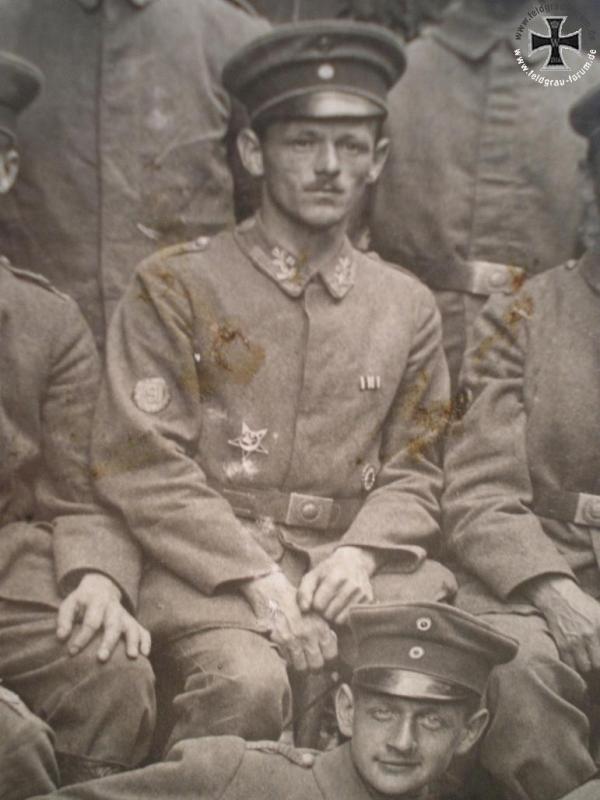
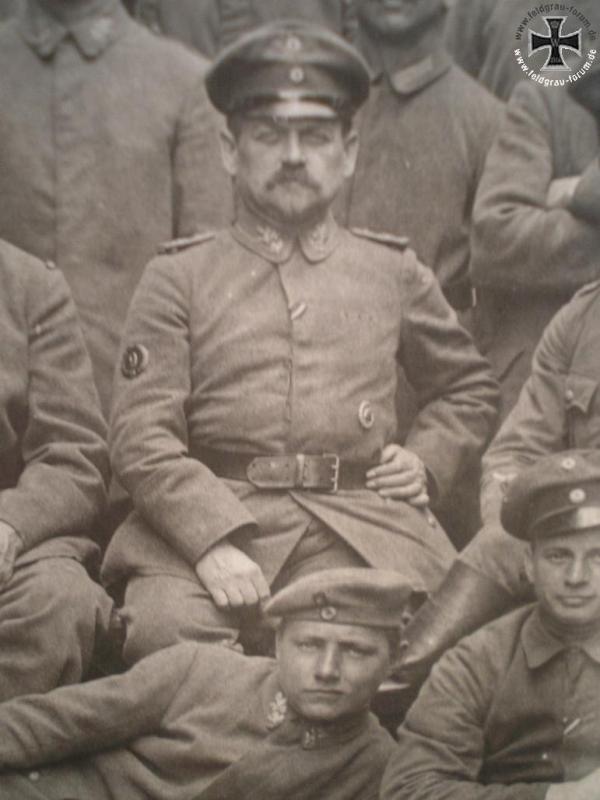
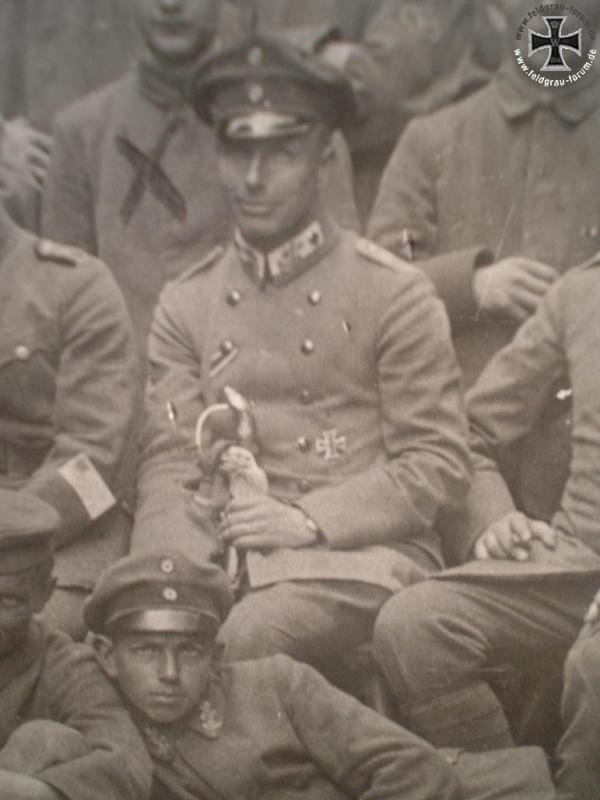 0
0 -
Sorry, no photo upload possible. None of the uploaders work
0 -
Hello!
I think, this photo shows men of the Detachement v. Oven.
Indicators: Oakleaf upon the collars and a number in a circle-oak-leaves
Is v. Oven right?
0 -
Ah, ok,, thanks, Glenn! But I´ve seen, the original book is available for 20€. That´s better than a pdf
0 -
Hello Glenn!
Thanks for the link! Do you know, if it possible to download that book in one single step?
0 -
Hello Bernhard!
Very interesting MP!
The MW Kp. 221 belonged to the 21.Res.Div. and consisted of :
s. MW-Abtl. 19
m. MW-Abt. 113
l. MW-Abt. 255
19 and 255 is mentioned in the MP.
The l. MW-Abt. 214 belonged to the 9.Res.Div.
0 -
Hi Paul!
The tress is the so-called "Bayern-Borte" (Bavarian-braid or bavarian galloon, I don´t know th right english term...)
It indicates bavarian units. Introduced in march 1916 it, normally, was used at the Bluse 15
0 -
L. was not the "Chef" of the regiment, he was the commander. That´s a difference. Chef means, he "owns" the regiment, but the "leader" was the Kommandeur.
But it could be possible, that he wears the regiment´s uniform, of course!
0 -
By the way: In that book is your photo of Graf Schlieffen shown. It says, that, on that photo, he wears the uniform of the general staff with epaulettes.
0 -
Hello!
The generals wore different uniforms. By the way, each general had the unifirm of the generals. A different one was the uniform of the general staff. The also could wear the uniforms of the units, from which they were chiefs or à la suite. The war minister and the chief of the general staff also could wear the uniform of the officers, who were under their command!
The chiefs of regiments did change. I don´t have a Rangliste of 1905, but of 1904.
In 1904 the chef of the Füs.Rgt.39 was the archeduke of Austria Rainer and Schlieffen was à la suite of the guard-uhlans.
The "Verlag Militaria" did publich a very good book only about generals!
You can also order it in english in the states:
0 -
Hello!
It might be the bright red, the so called crimson (red)
It was worn by the entire general staff. Here´s an example of a Hauptmann i.G.
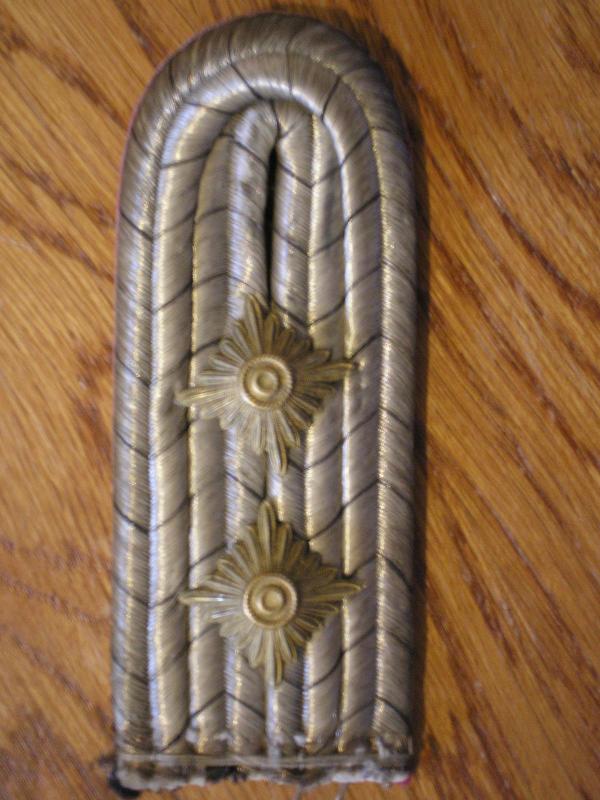
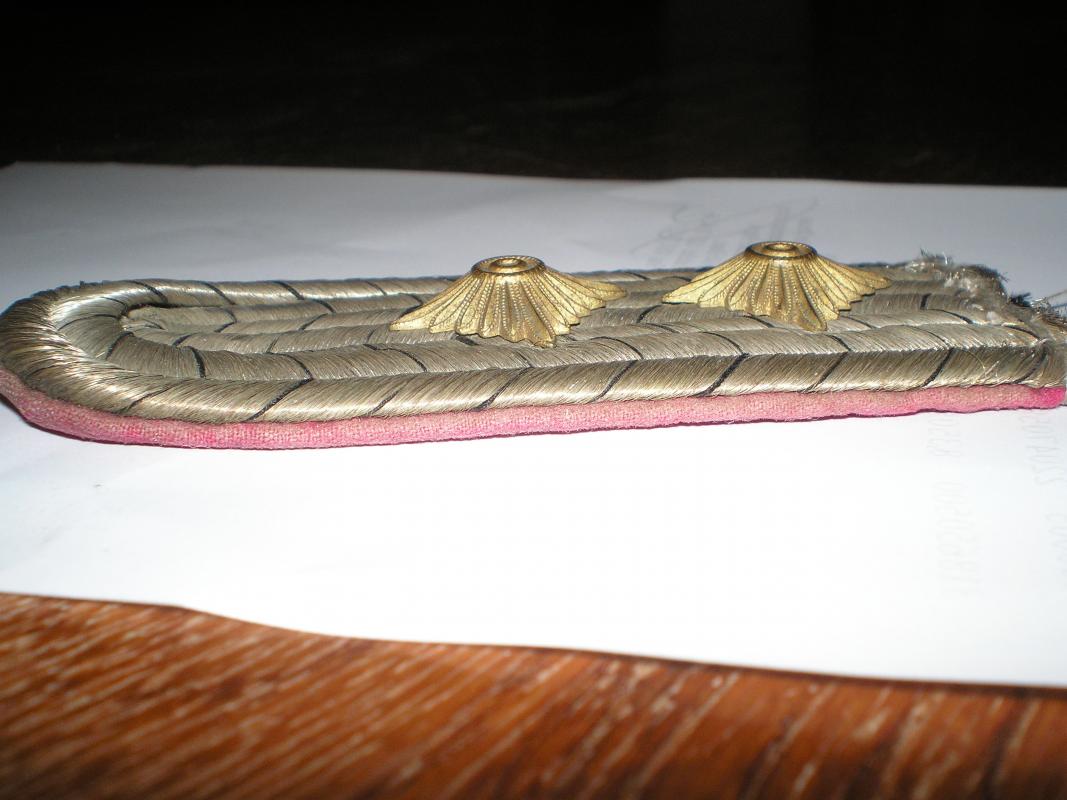 0
0 -
Hi Chris!
I wish you luck for finding the tunic, but it´ll be life-work...
0 -
Hi Eva!
Well, the number on the button indicates the company, and the number on the shoulder strap indicates the regiment.
If you see a 6 on the shoulder strap, it really could be the Gren.Rgt.6 (Posen)
0 -
Hello Eva!
Well, I´m not sure, if there was written "Uffz". It was just a guess. But it fits to the rank of the man (Stabsordonnanz). According to the name, it could be Weiss or Weise. Those handwritings are always difficulty, because whose name could it be? The atelier? The person who was photographed? An unknown person, who ordered another photo from the atelier?
The only thing, you can do, is to check all the names fit to the circle in that family. Maybe there is a similar name
0 -
The photo with the car is nice. Number plates from New Jersey.
The medal was the medal, each soldier did recieve, who served in the 70/71 war
0 -
Hello Eva!
I think, it´ll be an abbreviation of his rank. Probably Uffz. (Unteroffizier = NCO).
The last photo is a franco-prussian war photo. But unfortunately one can´t make out the unit
0 -
Thanks for that Andy, What I thought was interesting is that it appears to be a photo of a photo, perhaps Unit produced as a souvineer? Also the bloke far left seems to be a bandsman wearing his swallows nests so probably not at the front line? Thanks for the mapping.
Cheers
Jock

Hi Jock! The swallows were not rare. They wore it during the fights too. When they didn´t play music, the could be in action with their uniforms
0 -
Hi Jock!
Yes, it´s a boot...
I don´t know, if it´s an allied or a german airplane. The Inf.Rgt.94 belonged to the 38.Inf.Div. (4th army). October 1, the division came into the Cambrai area (Rumilly), where it fought heavy fights. Oct. 16 it came to a quiet area near Courtrai. Maybe the photo was taken there?
I attached a map of the period of oct.22 - nov.19. You´ll find the 38.Inf.Div. near Courtrai
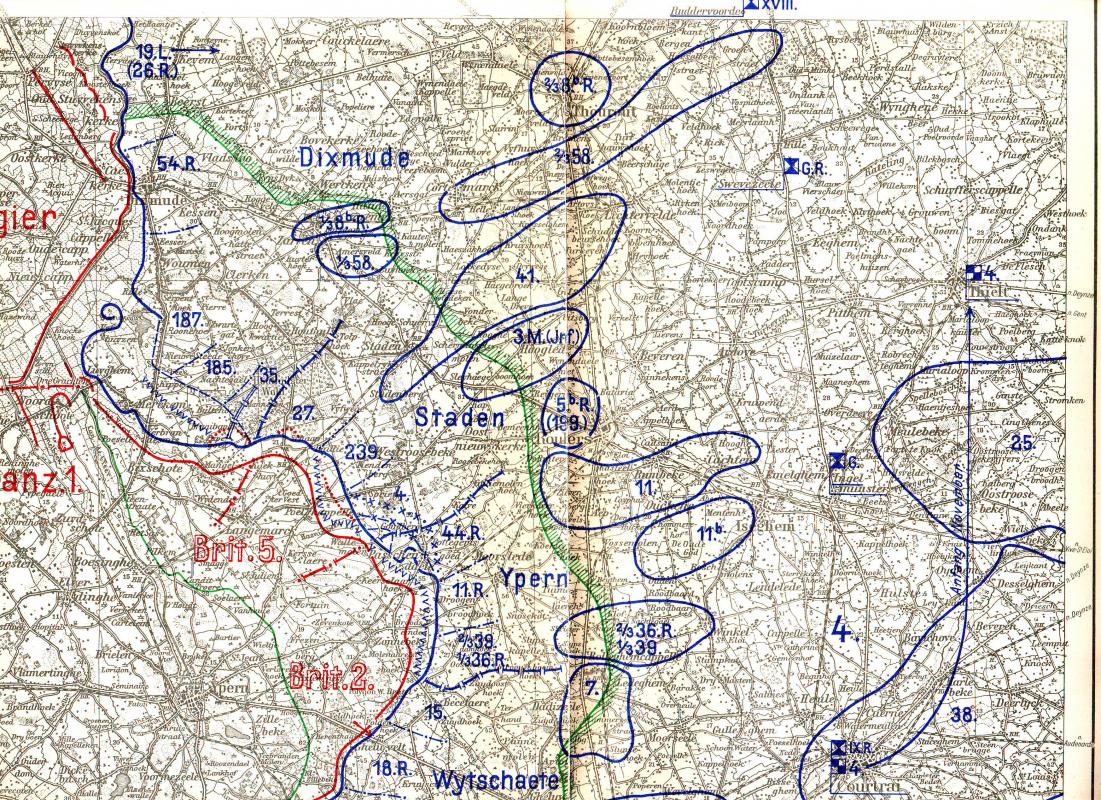 0
0 -
Hello Eva!
Well, the Luftschutz-helmets are not very rare here in Germany, because still in a lot of road and building constructions they are found by the workers.
Back to the photo. It´s strange to define the colours, because some colours appear in another colour as they really are.
We have brandenburg cuffs (three buttons vertical). Those were worn by infantry and foot-artillery. The shoulder-strap semms to be "edged", but that can´t be, because edged ones were worn by saxon units. But I see a prussian collar-button. Saxon units didn´t have those cuffs.
So the collar might be red and the shoulder straps blue or yellow (yellow often appears nearly black!). The cuffs might be red with white pipings. Unfortunately I can´t anything upon the strap, but there is something! Probably a number.
Now it´ll be interesting, in which area the man lived. For the combinations I mentioned above we have the following possibilities:
Red cuffs, white pipings, yellow shoulder straps:
V.Armycorps (Posen):
Gren.Rgt.6 (Posen)
Inf.Rgt.19 (Görlitz and Lauban)
Inf.Rgt.37 (Krotoschin)
Inf.Rgt.46 (Posen and Wreschen)
Inf.Rgt.47 (Posen and Schrimm)
Inf.Rgt.50 (Rawitsch and Lissa)
Inf.Rgt.58 (Glogau and Fraustadt)
Inf.Rgt.155 (Ostrowo and Pleschen)
Red cuffs, white pipings, blue shoulder straps:
VII. Armycorps (Westphalia)
Inf.Rgt.13 (Münster)
Inf.Rgt.15 (Minden)
Inf.Rgt.16 (Mülheim/Ruhr)
Füs.Rgt.39 (Düsseldorf)
Inf.Rgt.53 (Köln)
Inf.Rgt.55 (Höxter, Bielefeld, Detmold)
Inf.Rgt.56 (Wesel, Cleve)
Inf.Rgt.57 (Wesel)
Inf.Rgt.159 (Mülheim/Ruhr)
0 -
Hello Chris!
I don´t think,we have a bavarian uniform. Probably it´s Württtemberg
The württemberg Gebirgsschützen.
First set-up as a Schneeschuh-Kompanie in august 1914 (leader Oberleutnant d.Res. Schaller from IR119), it became may, 1st, 1915 the name Gebirgs-Kompanie, later in october 1915 Gebirgs-Bataillon (6 companies and 6 MG-platoons), later in may 1918 Gebirgs-Regiment (2 bataillons, each had 3 companies, 1 MW-company, 1 signal-company and 1 infantry-gun-.company) The regiment was under command of XIV.Res.Korps., leader Oberstleutnant Sproesser (IR125)
The regiment:
I.Bataillon "Stochdorp" (1., 2., 3. comp., 1 MG-comp and Inf.Gun-comp.)
II.Bataillon "Roller" (4., 5., 6. comp.2.MG-comp., MW-comp.)
III.Bataillon "Grau" (Staff, 3.MG.comp and signal-comp.)
Together 27 officers, 543 NCOs and soldiers
I have a small booklet about uniforms in Baden-Württemberg ("Kleine Uniformkunde von Baden-Württemberg", written by Karl Hermann Freiherr v. Brand).
He writes:
The Gebirgsschützen recieved tunics with breast-pockets green collar-patches with a green "S". NCOs and simple soldiers didn´t have shoulder-straps, but so called "shoulder-bulges" (Schulterwülste), in remembrance to the old dissolved in 1871 württemberg Jäger-Bataillons.
When the company became the bataillon, the S upon the collar was replaced by a button with the company-number. Officers had a "crown-button". Maybe this man is an officers-aspirant???
The photo must be taken after the campaign of Rumania. Until then they only had the Gebirgsmütze (as a difference to the austrian mountain-troops). The tschako came after the campaign of Rumania.
0 -
Hi Eva!
I know the towns you used to be very well. I live in Essen...
It´s good place for collectors, because there are a lot of expos in Belgium and the largest german one in Kassel. Both are max 2hrs away.
It´s really sad, that you can´t get the na m eof the soldier. It would be much easies to find out something. Is it possible for you to make a close-up of the shoulder strap of the picture in #9, please? Or can you read anything?
0 -
Eva,
Your man appears to be in kurassier uniform, note the cuffs, and holding a kurassier pallasch.
Regards,
Terry
Hello!
No, 100% no Kürassier. There only were four regiments with a chiffre on the shoulder straps.
1. WR
2. L
6. Cyrillic N
8. GR V
Each chiffre had a crown above.
Here we have a latin number, so Stabsordonnanz
0 -
Hello Eva!
That´s very intersting, reading woman´s point of view about unifoms. Great! I agre with you with the old uniforms. They are much more beautiful than the simple camouflage uniforms of our days.
Well, a beer in Germany would be fine. We have so many of them, we could sell it...

Unfortunately I can´t identify the medal. I´m not s specialist in medals. Maybe the other friends here could help.
Can you recognize antyhing upon the shoulder strap of the second photo?
0 -
Hello Eva!
I think it´s great, you are interesting in uniforms. That´s not usual for a woman!
Could you please make a close-up of his medal?
In peacetime there were not too much soldiers of this branch. Each commanding general of an army-corps had an NCO-Stabsordonnanz, the other generals of brigades and divisions had just a corporal. So each army-corps only had roundabout 12 Stabsordonnanzen. In wartime they were transfered to the mounted staff-guards of the divisions.
If a commanding-general had only one single NCO-Stabsordonnanz ("Stabsordonnanz-Unteroffizier"), we might to know, when the pic was taken.
I think, it´s a late photo, because his uniform changed (the front-braids are missing), probably 1910 or later.
The commanding generals of the VII.Army-corps (If it is a VII upon the shoulder straps!) were:
11.8.1909-16.9.1914: Gen.d.Kav. Karl v. Einem, gen. Rothmaler
16.9.1914-29.6.1915: Gen.d.Inf. Eberhard v. Claer
29.6.1915-6.8.1918: Gen.d.Inf. Hermann v. Francois
6.7.1918-18.1.1919: Generalleutnant Wilhelm v. Woyna
18.1.1919-30.9.1919: Generalleutnant Oskar Freiherr v. Watter
0



Large frame for time in service Field Art Regt 46 Celle
in Germany: Imperial: Rick (Research) Lundstrom Forum for Documentation and Photographs
Posted · Edited by The Prussian
Hello!
Most of those coloured "Reservistenbilder" are dedicated to individuals.
These paintings were made in a quantity of a few hundred, while remaining the head white, Each soldier now put his face upon the empty place, so he´s got his own individual picture.
Please have a look here: